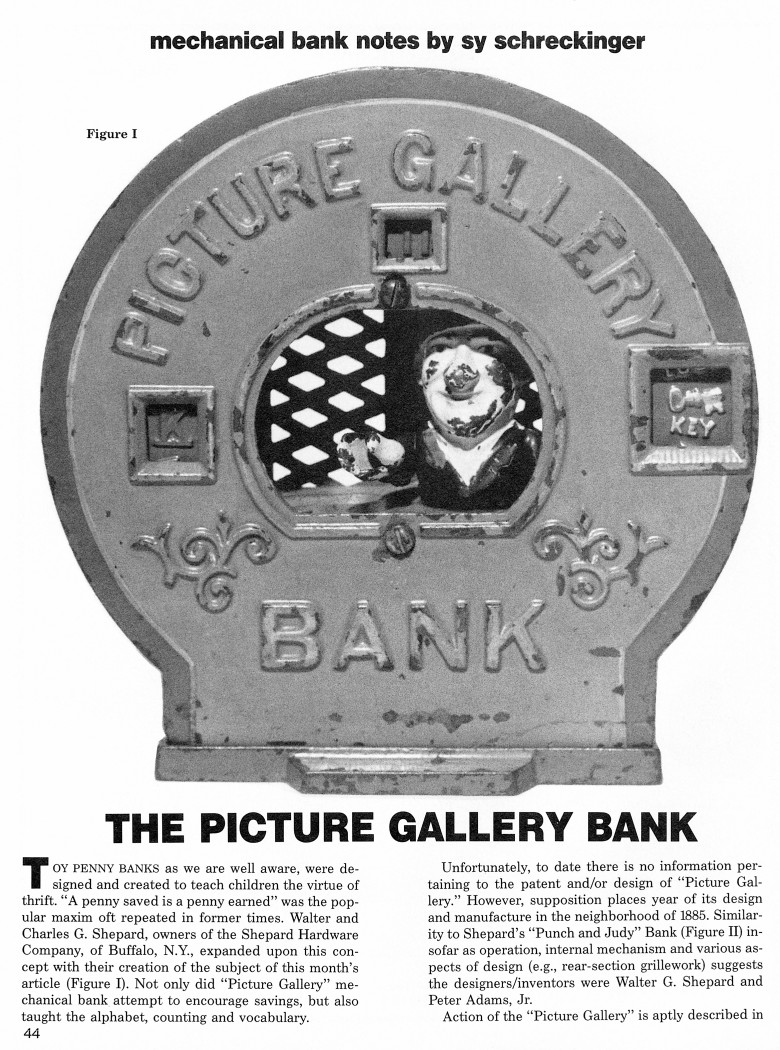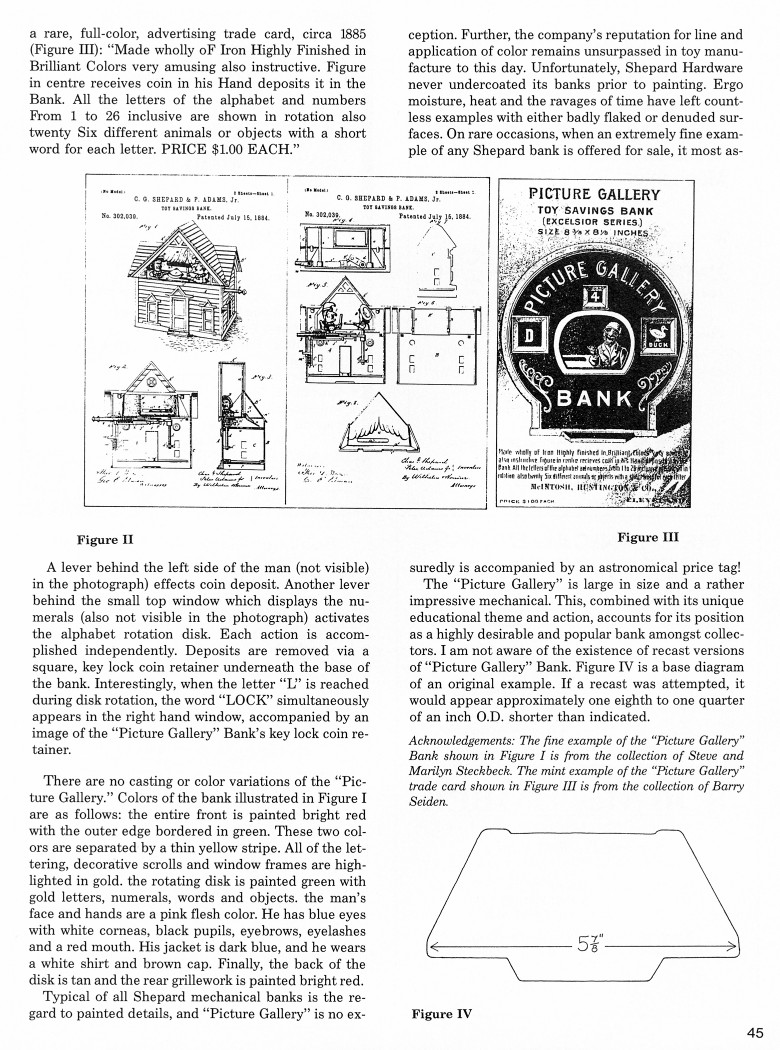|
The Picture Gallery Bank
by Sy Schreckinger – ANTIQUE TOY WORLD Magazine – February,
1996
Toy penny banks as we are well aware, were
designed and created to teach children the virtue of thrift. "A penny
saved is a penny earned" was the popular maxim oft repeated in former
times. Walter and Charles G. Shepard, owners of the Shepard Hardware
Company, of Buffalo, N.Y., expanded upon this concept with their creation
of the subject of this month's article (Figure I). Not only did "Picture
Gallery" mechanical bank attempt to encourage savings, but also taught the
alphabet, counting and vocabulary.
Unfortunately, to date there is no information pertaining to the
patent and/or design of "Picture Gallery." However, supposition places
year of its design and manufacture in the neighborhood of 1885. Similarity
to Shepard's "Punch and Judy" Bank (Figure II) insofar as operation,
internal mechanism and various aspects of design (e.g., rear-section grill
work) suggests the designers/inventors were Walter G. Shepard and Peter
Adams, Jr.
Action of the "Picture Gallery" is aptly described in a rare,
full-color, advertising trade card, circa 1885 (Figure III): "Made wholly
of Iron Highly Finished in Brilliant Colors very amusing also instructive.
Figure in centre receives coin in his Hand deposits it in the Bank. All
the letters of the alphabet and numbers From 1 to 26 inclusive are shown
in rotation also twenty Six different animals or objects with a short word
for each letter. PRICE $1.00 EACH."
A lever behind the left side of the man (not visible) in the
photograph) effects coin deposit. Another lever behind the small top
window which displays the numerals (also not visible in the photograph)
activates the alphabet rotation disk. Each action is accomplished
independently. Deposits are removed via a square, key lock coin retainer
underneath the base of the bank. Interestingly, when the letter "L" is
reached during disk rotation, the word "LOCK" simultaneously appears in
the right hand window, accompanied by an image of the "Picture Gallery"
Bank's key lock coin retainer.
There are no casting or color variations of the "Picture Gallery."
Colors of the bank illustrated in Figure I are as follows: the entire
front is painted bright red with the outer edge bordered in green. These
two colors are separated by a thin yellow stripe. All of the lettering,
decorative scrolls and window frames are highlighted in gold. the rotating
disk is painted green with gold letters, numerals, words and objects. the
man's face and hands are a pink flesh color. He has blue eyes with white
corneas, black pupils, eyebrows, eyelashes and a red mouth. His jacket is
dark blue, and he wears a white shirt and brown cap. Finally, the back of
the disk is tan and the rear grillework is painted bright red. Typical of
all Shepard mechanical banks is the regard to painted details, and
"Picture Gallery" is no exception. Further, the company's reputation for
line and application of color remains unsurpassed in toy manufacture to
this day. Unfortunately, Shepard Hardware never undercoated its banks
prior to painting. Ergo moisture, heat and the ravages of time have left
countless examples with either badly flaked or denuded surfaces. On rare
occasions, when an extremely fine example of any Shepard bank is offered
for sale, it most assuredly is accompanied by an astronomical price tag!
The "Picture Gallery" is large in size and a rather impressive
mechanical. This, combined with its unique educational theme and action,
accounts for its position as a highly desirable and popular bank amongst
collectors. I am not aware of the existence of recast versions of "Picture
Gallery" Bank. Figure IV is a base diagram of an original example. If a
recast was attempted, it would appear approximately one eighth to one
quarter of an inch O.D. shorter than indicated.
Acknowledgements: The fine example of the "Picture Gallery" Bank
shown in Figure I is from the collection of Steve and Marilyn Steckbeck.
The mint example of the "Picture Gallery" trade card shown in Figure III
is from the collection of Barry Seiden.
|


